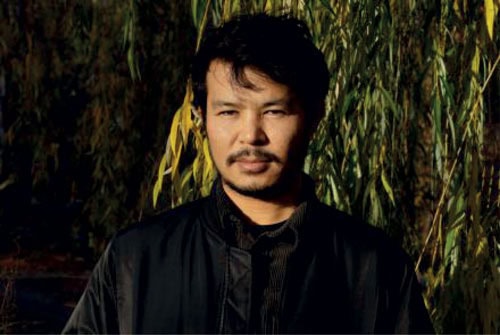Aziz Hazara, an artist who currently works in Kabul and Berlin, collected a shipment of 20 tonnes of rubbish from Bagram airbase, once used as the main US military base in Afghanistan, the UAE-based The National reported.
The National said the shipment is on its way back to the US after crossing the Indian Ocean and the At-lantic.
Hazara told The Na tional that the garbage’s journey would take up to one year, and was intended to re-trace the “supply chain of the global war on terror,” the route through international ports and cities where American soldiers and equipment passed through to get to Afghanistan during the war. Its final destination will be the United States.
Hazara called it his “gift to the American people.”
There are regulations against importing garbage to the US (but, The National notes, the US routinely ships garbage to SE Asia) but in this case the ship-ment is technically classified as art.
“When it arrives, it belongs to the Americans. Once it is in America, you can’t undo it,” Hazara said, as quoted by The National.
“Bagram airbase, where more than 100,000 Ameri-can troops had served from 2001 to 2021, had a shopping center and fast-food restaurants,” The National said. “Now, heaps of rubbish, toxic plastic, scrap metal and electronic waste are all that remain, and the Taliban have taken control of the airfield and the rest of Afghanistan.”
This work has been commissioned for the 2022 Carnegie International in September, a major art exhibition held every three to four years in Pitts-burgh (US), The National said.
Hazara was born in 1992 in the central province of Wardak.
In December, he won the $100,000 Future Genera-tion Art Prize from the PinchukArtCentre, Kyiv, for his work on Bow Echo (2019). The five-channel video installation shows young boys struggling to climb rocky mounds along the hills of Kabul as heavy winds attempt to knock them down, among other scenes.
According to Hazara, many Afghan children are able to recognize the difference between “Taliban-used Kalashnikovs” and the US military’s rifles as they have been through a lot of conflicts. “War has become very normalized,” he said, as quoted by The National. “We grow up with it, we die with it. We commemorate it, we celebrate it and we remember it.”
“The Taliban that we have in Kabul now are the kids that grew up in the refugee camps in Pakistan [in the mid-1980s and 1990s]. They have been through all these ‘J is for Jihad’ campaigns,” Hazara said, referring to, according to The National, “$50 million US-backed educational programs that pro-moted the use of ‘mujahideen textbooks’ that contain lines such as ‘Doing Jihad against infidels is our duty.’” The books and lessons were messaging aimed at the Soviets during the war, The National said.
“This process of radicalization is an American pro-ject,” Hazara told The National .—TOLO










